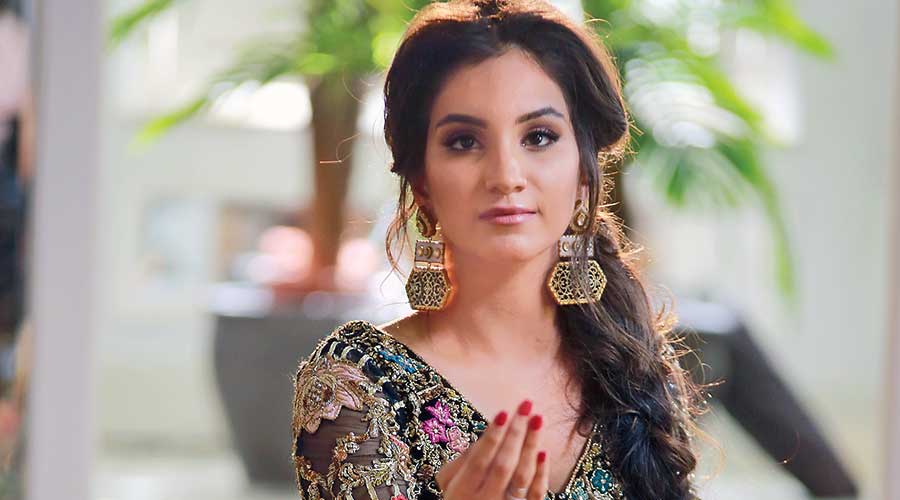THREADS OF SUCCESS
- 06 Apr - 12 Apr, 2024
Art moves. It expresses feelings that sometimes words cannot encapsulate or tells us a story that forces one to take the road to less travelled thoughts. Maybe that is why it is the most debated subject and has aroused great support and opposition from all walks of life and all ends of the earth. There is an artist in all of us, and a hidden art form that has to be explored and nurtured, some wordier than others, and some ever so silent. This week, we find an artist who expresses with dance. Alaina Roy, cherishing profound love for her art trained as a professional Kathak dancer. There is very little that induces a trance as seamlessly as a great stage performance, but have you wondered what goes into it? Here is Alaina talking to us about what remains untold.

What does Alaina like to do when nobody is watching?
I love singing, but I’m terrible at it. So I sing to myself when no one is around.
If you had to describe the feeling of the stage and the performance in three words?
Nothing. Like. It.
As an audience, we see the final result which is an elegant and soulful performance. Tell us about the process instead, what do we not see?
It’s a very long process. I find a performance opportunity and the first thing I do is finalise my repertoire through looking back at all of my notes, Kathak folders, previous performances and consult with my parents and incorporate their feedback. I arrange musicians in case of live music (always preferred) and light technicians. I choreograph the compositions, rehearse and draw out my light plan in accordance to timings of each composition. I also have to arrange a stage tech rehearsal at the venue once before the performance. On the night before, I apply mehendi and red nail paint to compliment it. For the final performance I wear my ghungroos, and warm up at the venue. Also, I continue teaching my Kathak classes simultaneously.
How much effort goes into curating the look, the outfit, the makeup and accessories? Is that part of your process or do you have a stylist?
So much time and effort goes into the look. You’re constantly worrying about whether your dupatta actually matches (even though it obviously does); if you should wear churidar pyjama or leggings or a shalwar; if you should wear a jhoomar or a teeka; will my outfit stand out in the lights being used or will I have to alter my outfit to suit the lights. There’s just so much that goes into a performance behind the scenes that no one ever knows about, be it rehearsals with musicians, coordinating those rehearsals, doing stage techs, running to and from the darzi or getting the right lace and tassels to match. To be honest, I love it. It’s so much fun. My main stylist is my Amma, my girlfriends and my grandmothers (who usually help me find the right kapra when I’m about to give up on the search).
When did you know classical dance is for you?
When I realised I couldn’t live without it.
What is the traction like for Kathak in Karachi?
There is a lot of scope. Unfortunately, our people are deprived of the art form. They want to learn; gain knowledge and they want to embrace this medium of expression. I get a lot of appreciation after a performance and I am humbled by the love Kathak receives in Pakistan. Yes, there are negative aspects too; people do bash you, they do throw harsh comments at you, but such is life. I take each remark in my stride and try to do the best I can as an artist.
Most memorable performance to date?
O2 Arena, London. It just felt like something else.
Do you see yourself doing anything else other than practice as a professional dancer?
I am completing my Bachelors in Psychology, I have always worked in the marketing field and I have an immense passion for my art form – so, I’m a marketer by day, a Psychologist by education and a Kathak artist, dancer, teacher, performer and choreographer at heart.
Is dance a catharsis for you?
100 per cent. I can express feelings, emotions and moods tenfold better through dance than I think I will ever be able to express through words. I am a non-verbal communicator. When I’m dancing… I feel free, I feel happy, I feel different – a great different. It’s a feeling no one can take away from me.
What is distinctively special about Kathak as compared to other dance forms?
I began ballet classes at six, however, did not continue those classes for more than a few months. Ever since I started learning Kathak, I have felt so deeply connected to my Pakistani roots, to my culture and have been able to embrace, encourage and enjoy our music much more. Kathak connects me to my homeland. It’s a special feeling that I can’t explain. Maybe I can dance out this feeling for you [laughs].
Kathak is derived from Katha, which in an ancient language means ‘story’. Is there a story you want to tell?
You can tell any story through this medium of expression… a story about nature, a trip to the beach, a tale of romance, a fight with your sibling, a story of longing, your sadness, happiness, anger… anything. Koi bhi kahani. Kisi bhi tarha ki kahani.
If somebody wants to learn classical dance, how should they start?
Find yourself a trained teacher, start classes and give it your all. Make sure you set aside time for Riyaaz (practice) on a daily basis, and most importantly, dil se seekho.
COMMENTS